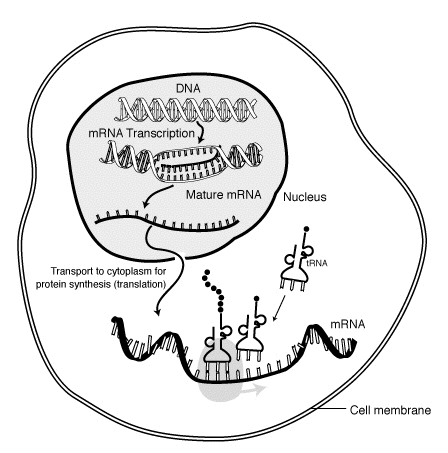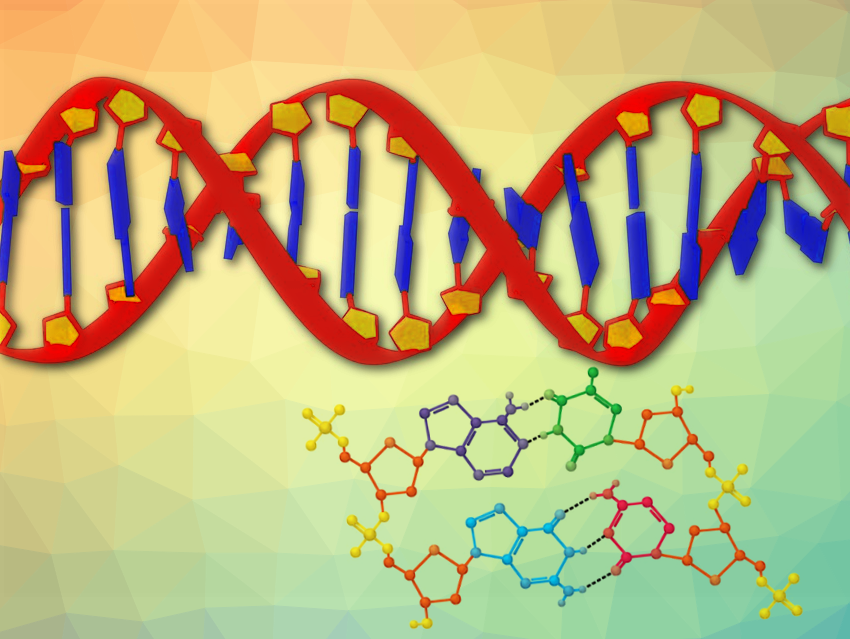The Ribosome, a Powerful Chemical Decoding Machine
Decoding genetic information and the synthesis of proteins require an unbelievable chemical effort. The structure of the intracellular decoding machine—the ribosome—is correspondingly complex: In cells with a nucleus, it contains two units that consist of one ribosomal rRNA and about 33 proteins and three rRNAs and about 49 proteins, respectively.
The mRNA binds to this giant structure and acts as the template for protein synthesis. Based on the codon being read, the corresponding transfer RNA binds to the mRNA, carrying its amino acid along. The amino acids are then linked to each other through a catalytic subunit, and when a stop codon is read, the protein is released (see Figs. 1 and 2).
 |
 |
|
|
Figure 1. Transcription (synthesis of RNA based on the DNA template) and translation (base sequence in the mRNA is translated into the amino acid sequence of the protein). (Source: National Institutes of Health, USA) |
Figure 2. Animation depicting translation: The ribosome is green and yellow, tRNA is dark blue, other involved proteins are light blue. The resulting peptide is released into the endoplasmic reticulum. (Source: Bensaccount at en.wikipedia, wikimedia commons, CC BY 3.0) |
In detail, these processes are significantly more complex [1], and it has only been in recent years that more precise structural information about the different parts of the ribosome has been obtained. So far, an impression of the overall picture of ribosomal protein synthesis can only be obtained through complex computer simulations, in which over two million atoms must simultaneously be taken into account. The computational power required can only be found in supercomputers and the results for the ribosome represent the most complex biochemical structural simulation at the time of publication [2].
References
[1] W. Müller-Estrel, Biochemie; Eine Einführung für Mediziner und Naturwissenschaftler, Spektrum Verlag, Heidelberg, Germany 2018. ISBN: 978-3-662-54850-9
[2] K. Y. Sanbonmatsu, S. Joseph, C.-S. Tung, Simulating Movement of tRNA into the Ribosome During Decoding, Proc. Natl. Acad. Sci. USA 2005, 44, 15854–15859. https://doi.org/10.1073/pnas.0503456102




